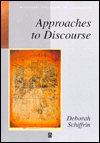The Sociolinguistic Variable
Labovian Methodology
The sociolinguistic variable is, Fasold (1990) says, a set of alternative ways of saying the same thing, although the alternatives, or variants, have social significance. More specifically, a sociolinguistic variable is a linguistic element that co-varies not only with other linguistic elements, but also with a number of extralinguistic independent variables like social class, age, sex, ethnic group or contextual style. Labovian methodology seeks to isolate variables at the levels of core features and to derive rules for their distribution, making correlations with social variables.
The concept of the sociolinguistic variable is theoretically significant because it allows quantitative statements to be made about language use. For instance, one speaker might be said to use more or less of a particular variant than another speaker, rather than categorically to use it or not.
Studies using the concept of the sociolinguistic variable reveal probabalistic, not categorical, occurences. Nevertheless, “sociolinguistic variables,” Gumperz (1992: vii) writes, “are themselves constitutive of social reality and can be treated as part of a more general class of indexical signs which guide and channel the interpretation of intent.”
An Example from New York City
An example of a sociolinguistic variable is (r) in New York City. The distribution of the variable may be studied in terms of whether a speaker pronounces or deletes the consonant /r/ in final or post-vocalic preconsonantal positions (for example in car, cart). Speaker A’s use of the variable can be compared with speaker B’s, since (r) is a piece of the language which can be counted. The variants of a given variable are identified in advance and assigned a numerical value which reflects the social values atttached to them. Their incidence is correlated statistically with (i) relevant features of the sentence or discourse environment and (ii) with social characteristics, such as class, of their speakers. That is, the value assignment permits a given individual to be assigned a position on a status scale. The status indexes are then grouped into (for instance) classes.
In Labovian sociolinguistics, there are different kinds of variables. (r) is an example of a discrete variable, the score being calculated in terms of either its presence or absence. More difficult are continuous variables, usually vowels, which cannot be scored in the same way as discrete variables. They are instead given a value in accordance with the position they occupy in phonetic space, to which a social meaning may also be assigned.
In examining data using the sociolinguistic variable, Labov recognizes the methodological importance of the principle of accountability: Analysts should record all occurences of a variable rather than selecting those variants of a variable that tend to confirm their argument while ignoring others that do not.
Variation Tied to Class Stratification
Studies using the concept of the sociolinguistic variable have revealed class stratification: Certain variants may be used, for instance, most frequently by the highest-status class, least frequently by the lowest-status class, and at intermediate frequencies by the classes in between, with frequency matching their relative status. Variants are not, however, associated exclusively with a particular class; it is their relative frequencies that are stratified by class.
During a study in New York City, Labov identified five sociolinguistic variables, one of which he labeled (dh) to distinguish it from (th), and recognized three variants of it: [_], [d], and [dd]. Labov’s research resulted in a pattern of class stratification for all five of the sociolinguistic variables studied, and the research has been replicated many times since.
Related Pages
Pragmatic Accounts of Communication
Interpretation and Indeterminancy  Throughout the essay, I will argue a hard line: the exact meaning of a speaker’s utterance in a contextualized exchange is often indeterminate. Within the context of the analysis of the teacher-pupil exchange, I will argue for the superiority of interactional linguistics over speech act theory because it reduces the indeterminacy and yields a more principled interpretation, especially when the interactional approach is complemented by elements from other sociologically influenced methods, namely the ethnography of communication and Labovian sociolinguistics. Read more …
Throughout the essay, I will argue a hard line: the exact meaning of a speaker’s utterance in a contextualized exchange is often indeterminate. Within the context of the analysis of the teacher-pupil exchange, I will argue for the superiority of interactional linguistics over speech act theory because it reduces the indeterminacy and yields a more principled interpretation, especially when the interactional approach is complemented by elements from other sociologically influenced methods, namely the ethnography of communication and Labovian sociolinguistics. Read more …